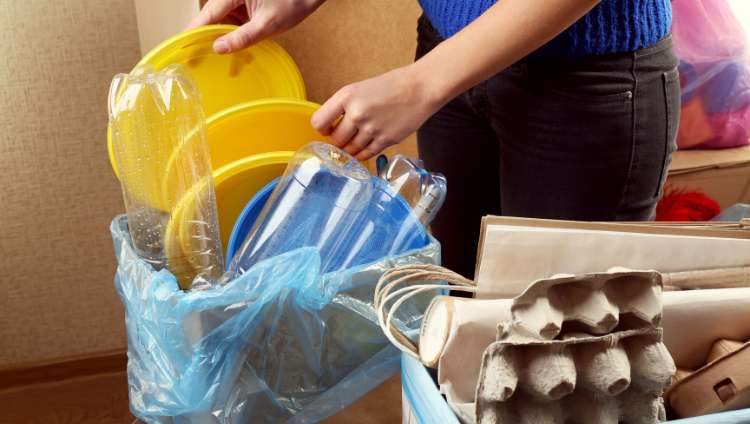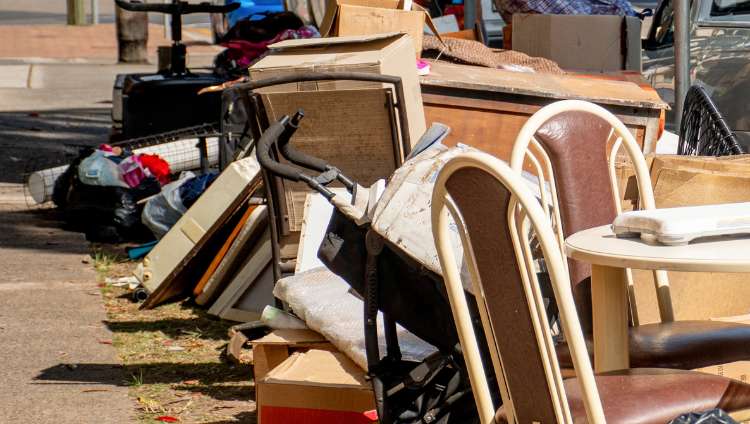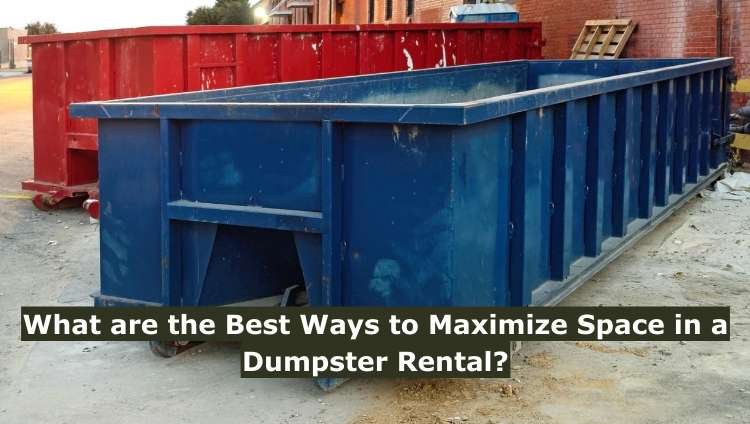Efficiently organizing waste in a dumpster rental is a savvy way to save both money and space. The key to maximizing your dumpster’s capacity is knowing exactly what you’ll be tossing in. Remember, there are specific rules and regulations regarding what can and cannot go into a dumpster.
Sticking to your dumpster rental provider’s guidelines and local disposal rules not only helps you avoid fines but also ensures safety for workers and keeps the area free from debris.
Making the most of your dumpster’s space is a smart move for effective waste management, blending cost efficiency with sustainability. In this blog, we’ll share top tips to help you maximize space in your dumpster rental.
Tip #1: Sort Waste Beforehand
Before you begin loading the dumpster, take a moment to sort your waste. Categorize items into recyclables (glass, plastic, paper), donations (clothes, usable furniture, electronics), hazardous materials (paint, chemicals, batteries), and general waste.
This method ensures only acceptable items go into the dumpster, helps avoid potential fines, and enables you to identify items that can be recycled or donated instead of simply discarded.
Learn more about recycling processes within your organization.

Tip #2: Consult with the Dumpster Rental Company
Your dumpster rental company can provide valuable guidance based on their experience. They can advise you on weight limits, prohibited items, and local disposal regulations.
Furthermore, they might offer tips for packing the dumpster effectively or suggest a different dumpster size if necessary. Communicating with the rental company ensures you are well-informed and ready.
Additionally, you can check out the best practices for selecting the right dumpster size.
Tip #3: Disassemble Large Items
Bulky items like furniture, appliances, and construction materials can take up a lot of space. By disassembling these items into smaller parts, you can fit more into the dumpster.
For example, you can break down a sofa by taking off the cushions and separating the frame. This approach allows you to pack items more effectively and make the most of every inch of available space.

Tip #4: Put the Heaviest and Flat Items First
When loading your dumpster, start with heavy and flat items. Placing these items at the bottom creates a stable foundation and prevents lighter items from being crushed.
Heavy items might include bricks, concrete, and large pieces of wood. Flat items, like old doors or sheets of plywood, can be laid down flat to maximize space.
Tip #5: Fill Gaps and Distribute Weight Evenly
As you load the dumpster, look for gaps and fill them with smaller items. This not only makes the most of your space but also helps in maintaining balance.
Distributing the weight evenly across the dumpster is crucial to avoid tipping or shifting during transport. For example, place small bags of waste or pieces of scrap wood into the gaps between larger items. Check out how to handle waste segregation effectively.
Tip #6: Use a Systematic Loading Approach
Take a methodical approach when loading your dumpster. Start at one end and methodically work your way to the other, ensuring each section is completely filled before moving on.
This organized approach helps prevent wasted space and keeps the dumpster neat. It also gives you a clearer view of the available space as you continue loading.
Tip #7: Consider Recycling and Donating
Before discarding items, consider whether they can be recycled or donated. Materials like metals, plastics, and electronics are often recyclable.
Items in good condition, such as clothing, furniture, and appliances, can be donated to charities. This practice reduces the amount of waste in your dumpster, frees up more space, and supports both environmental sustainability and community assistance.

Tip #8: Check Dumpster Capacity
Be aware of the dumpster’s weight limit and volume capacity. Overloading the dumpster can result in additional fees and pose safety risks during transport.
Regularly check how full the dumpster is and make sure you’re not exceeding the weight limit. If you’re nearing capacity, consider whether you need to rent an additional dumpster or make alternative disposal arrangements.
By following these tips, you can efficiently utilize your dumpster rental, ensuring effective waste management, cost savings, and compliance with regulations.
Frequently Asked Question
How do I know what items can be put in the dumpster?
Your dumpster rental company will provide a list of acceptable and prohibited items. Generally, household waste, construction debris, and yard waste are allowed. Hazardous materials, certain electronics, and tires are often prohibited.
What is the best way to load heavy items?
Place heavy items at the bottom of the dumpster to create a stable base. This prevents lighter items from being crushed and helps distribute the weight evenly, ensuring safer transport.
Can I overfill the dumpster?
No, overfilling a dumpster can lead to additional fees and pose safety risks. It’s important to keep waste below the top edge of the dumpster and adhere to weight limits specified by your rental company.
How can I maximize the space in my dumpster?
Disassemble large items, fill gaps with smaller waste, and load systematically from one end to the other. Placing heavy and flat items first also helps maximize space.
What should I do with items that can be recycled or donated?
Separate recyclables and donations before loading your dumpster. Many materials can be recycled, and usable items like furniture or electronics can be donated to local charities, reducing waste and saving space.
How do I handle hazardous materials?
Hazardous materials should not be placed in your dumpster. Check local disposal guidelines for proper handling and disposal of items like paint, chemicals, batteries, and electronics.
What if I exceed the weight limit of the dumpster?
Exceeding the weight limit can result in additional fees and may require the rental company to offload some items. It’s important to monitor the weight as you load and, if necessary, arrange for a second dumpster.
Can I rent a larger or additional dumpster if needed?
Yes, if you find that one dumpster isn’t enough, you can contact your rental company to arrange for a larger or additional dumpster. They can help you determine the best size based on your needs.
Conclusion
Maximizing space in your dumpster rental involves careful planning and organization. By sorting waste beforehand, consulting with your rental company, disassembling large items, and using a systematic loading approach, you can make the most of the available space.
Remember to consider recycling and donating usable items, adhere to local disposal regulations, and avoid overfilling the dumpster.
Efficient waste management not only saves you money but also supports sustainability and community welfare. Whether you’re tackling a home renovation, a major cleanout, or a construction project, these tips and best practices will help you get the most out of your dumpster rental, ensuring a smooth and cost-effective waste disposal process.


